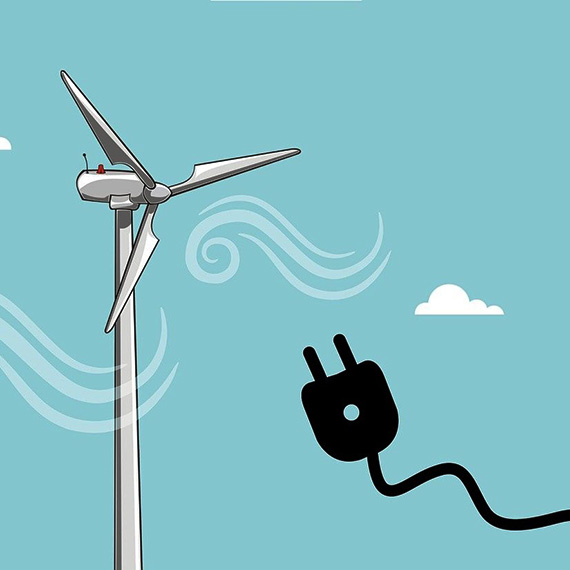A wind turbine is a device that converts the kinetic energy of wind into electrical energy. Hundreds of thousands of large turbines, in installations known as wind farms, now generate over 650 gigawatts of power, with 60 GW added each year. They are an increasingly important source of intermittent renewable energy and are used in many countries to lower energy costs and reduce reliance on fossil fuels. Wind turbines are common in many countries and regions around the world these days, but have you ever wondered how wind turbines generate electricity? In the following, we will help you understand how they combine to convert wind energy into electricity.
Feature of wind turbine
Wind turbines are manufactured in a wide range of vertical and horizontal axes. The smallest wind turbines are used for applications such as charging batteries that assist in powering boats or caravans or powering traffic warning signs. Larger turbines can be used to contribute to powering homes. Compared with photovoltaic, hydro, geothermal, coal, natural gas, wind has the lowest relative greenhouse gas emissions and the lowest water needs. Wind energy is an endless and inexhaustible energy source. Therefore, wind turbines use wind energy to generate electricity with high renewability, which is of great significance for alleviating the energy crisis and reducing dependence on fossil fuels
Capturing wind energy
Blade function: The blades of a wind turbine are a key component in capturing wind energy. The blades are usually designed with a special wing shape that can efficiently capture wind energy and convert it into mechanical energy. When the wind blows over the blades, the blades begin to rotate due to the force of the wind.
Rotor rotation: The blades are connected to the rotor, and when the blades rotate, they drive the entire rotor to rotate. The rotation speed of the rotor depends on the wind speed and the design of the blades.
Converting mechanical energy
Spindle transmission: The rotation of the rotor is transmitted to the generator through the spindle. The spindle is a key component that connects the rotor and the generator, and it is responsible for transmitting the rotational mechanical energy of the rotor to the generator.
Gearbox speed increase: In some cases, to match the speed requirements of the generator, a wind turbine will be equipped with a gearbox. The role of the gearbox is to convert the low-speed rotation of the rotor into the high-speed rotation required by the generator. This can improve the efficiency of power generation and reduce the wear of the generator.
Generate electrical energy
Generator operation: The generator is one of the core components of a wind turbine. When the generator receives the rotational mechanical energy from the rotor or gearbox, the magnetic field and wires inside it interact to generate electrical energy. This process is achieved through the principle of electromagnetic induction.
Power output: The power generated by the generator is transmitted to the power grid or used for other purposes through cables. Appropriate control and regulation may be required during the transmission process to ensure the stability and safety of the power.
